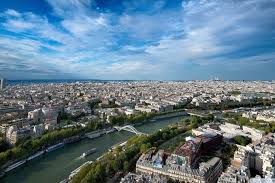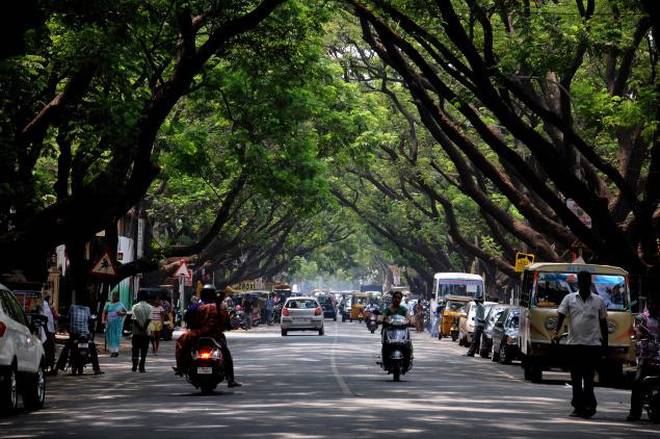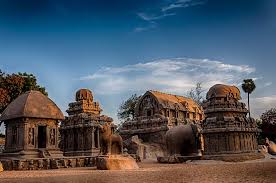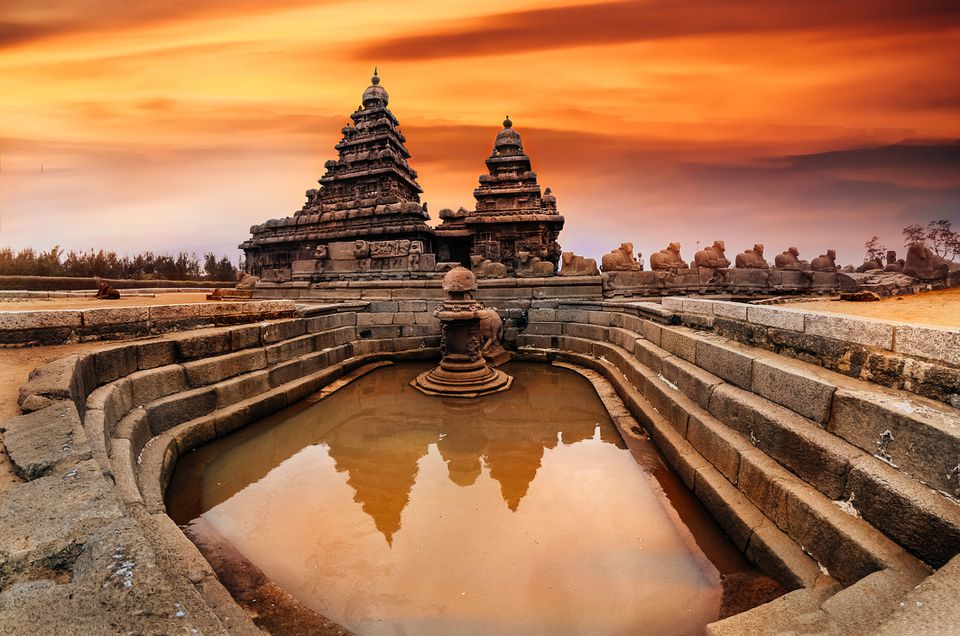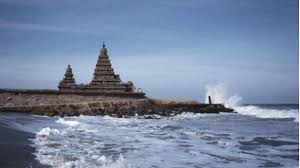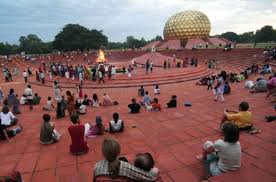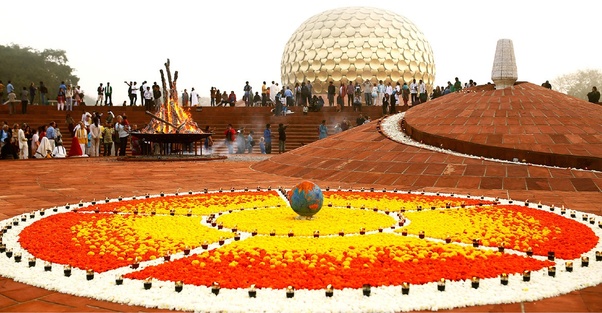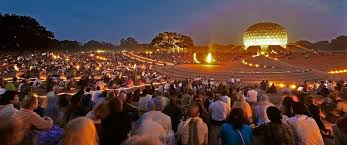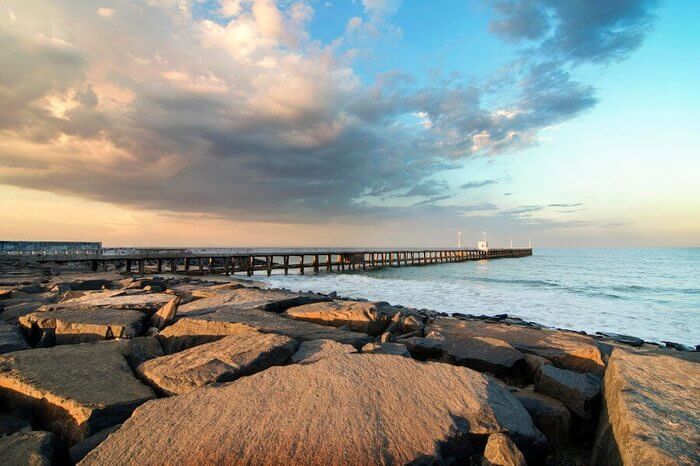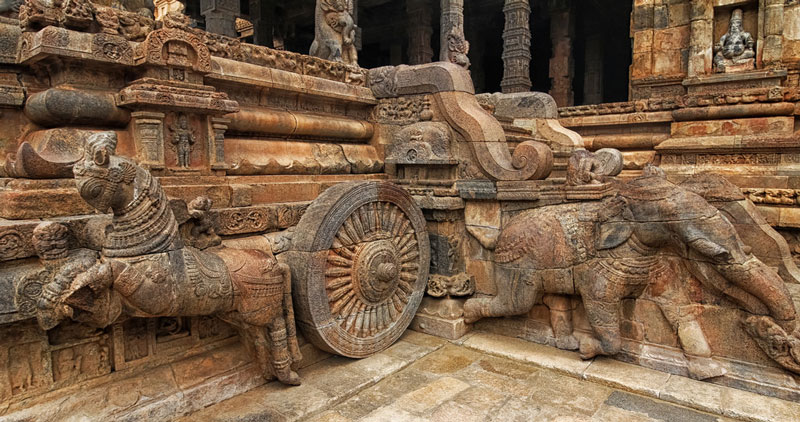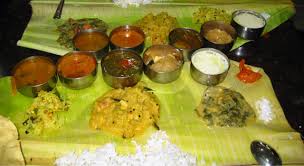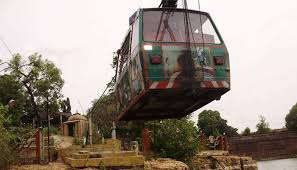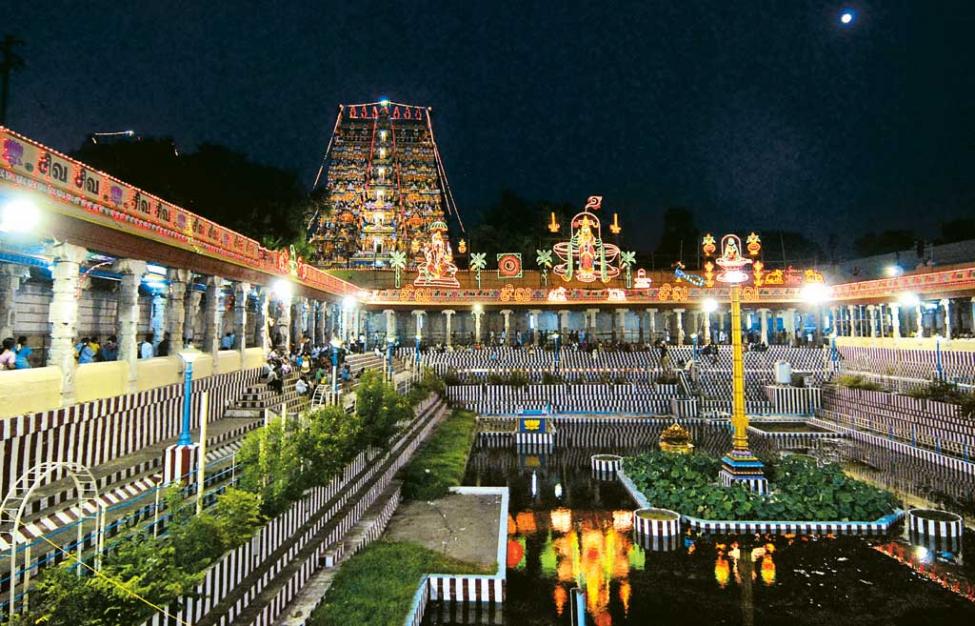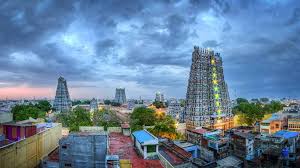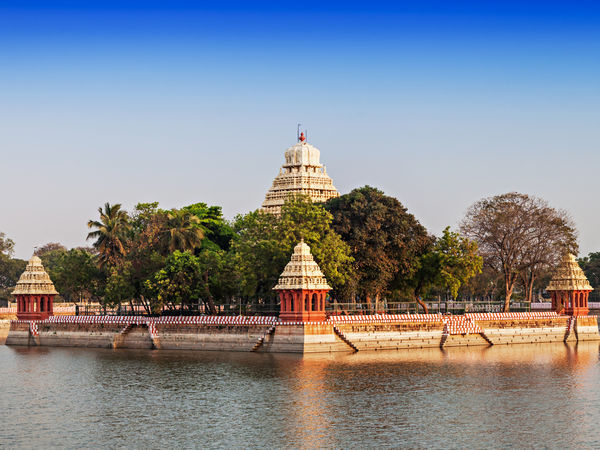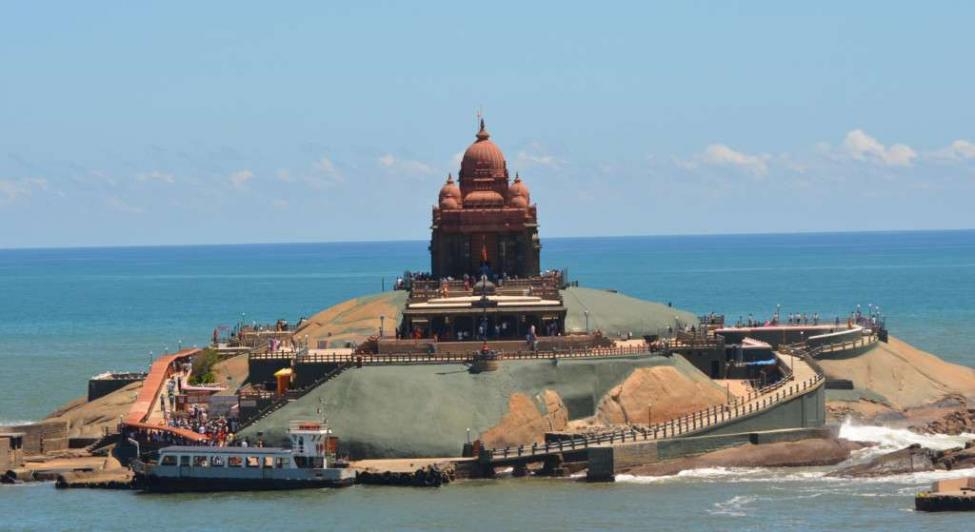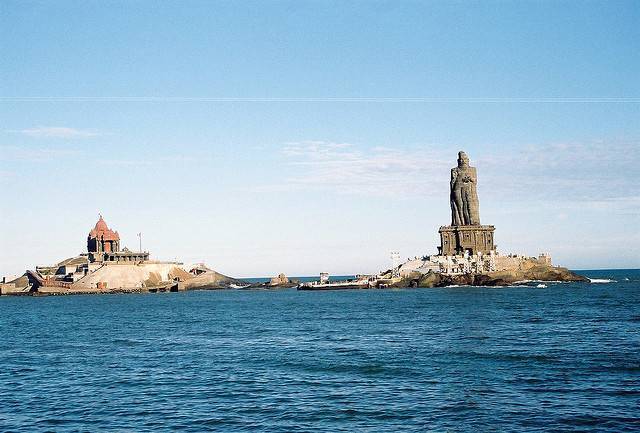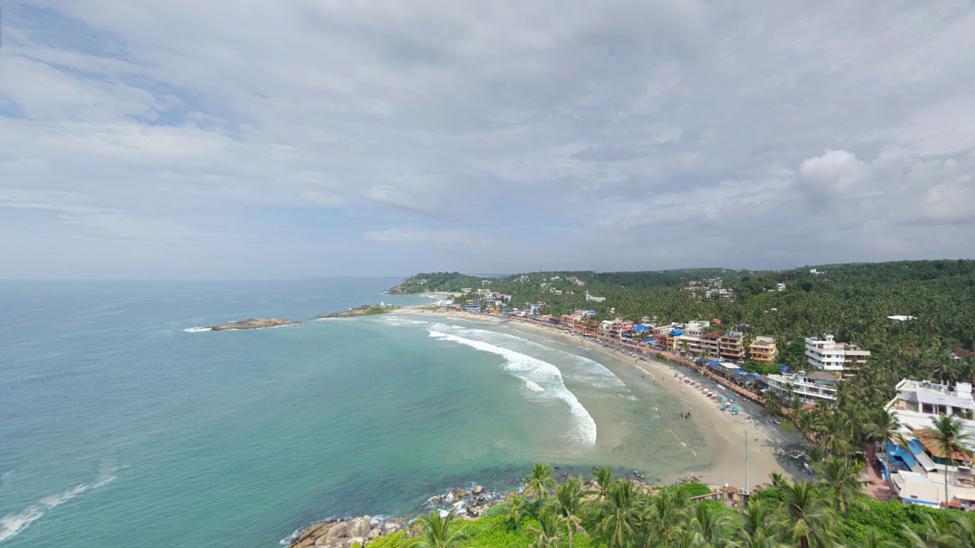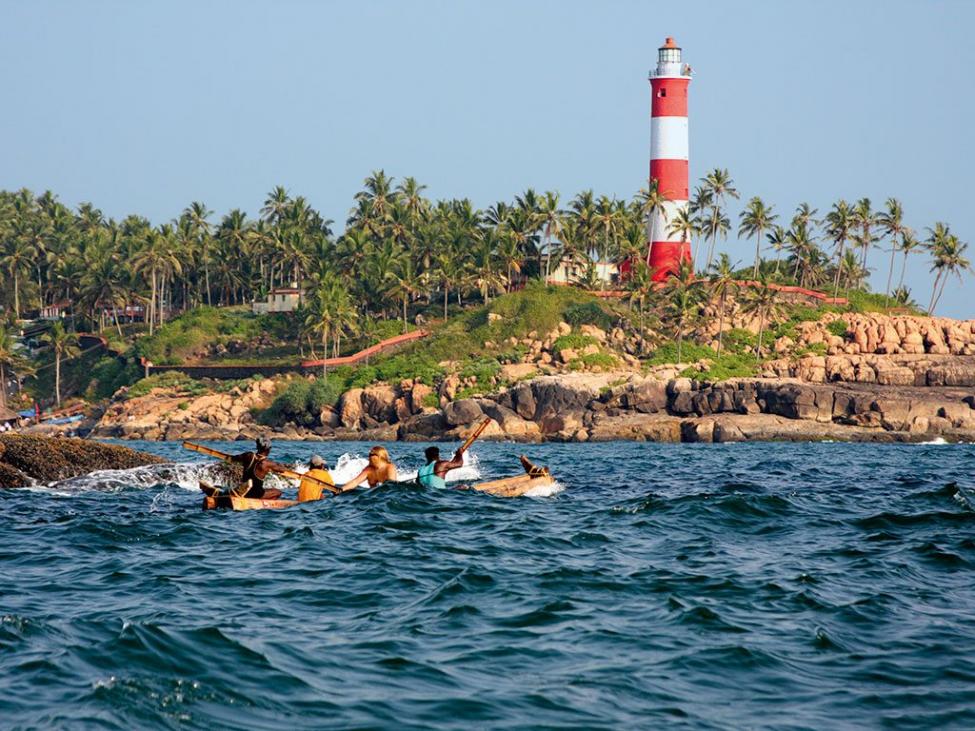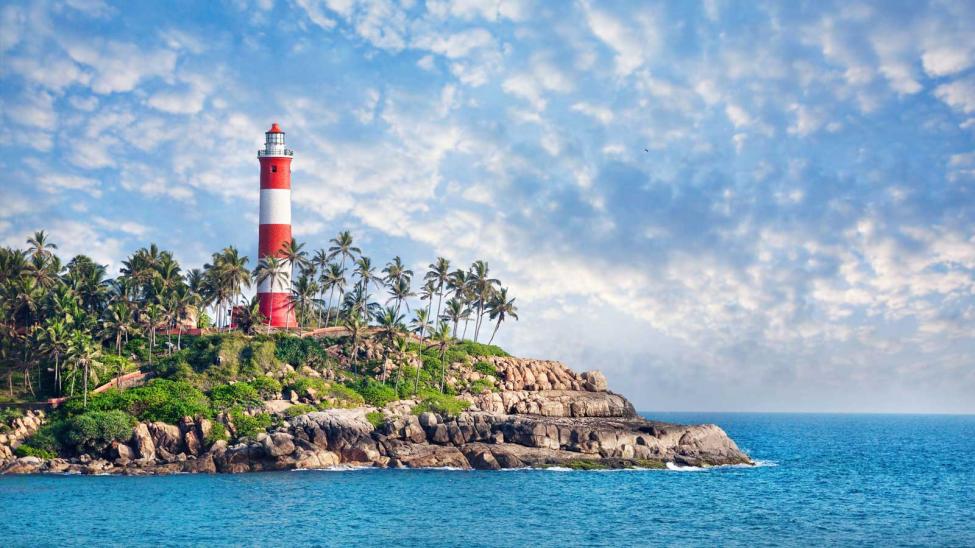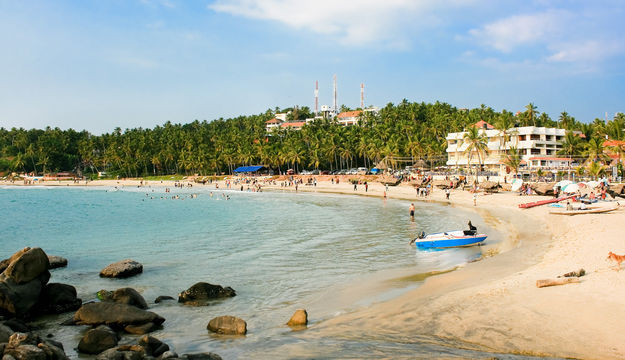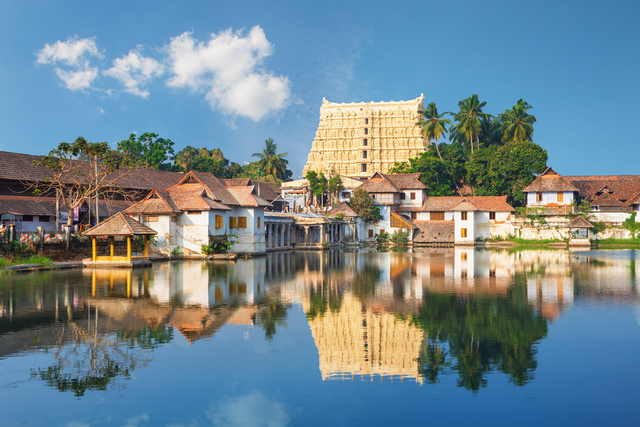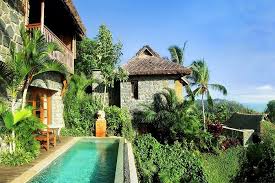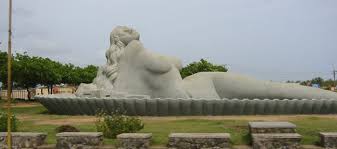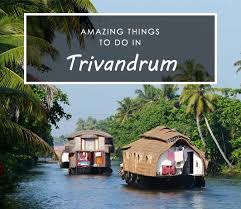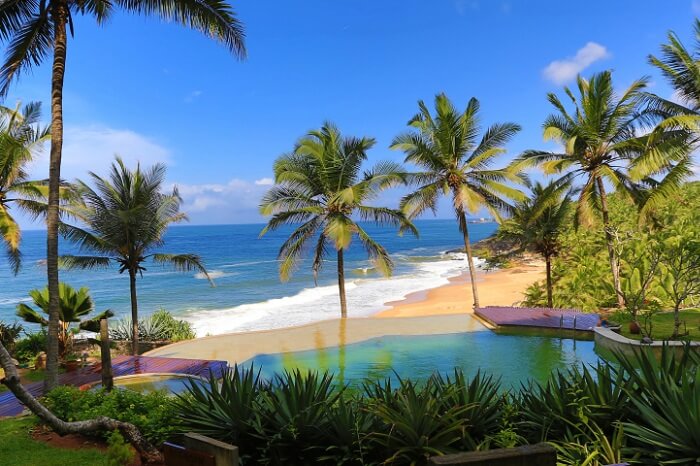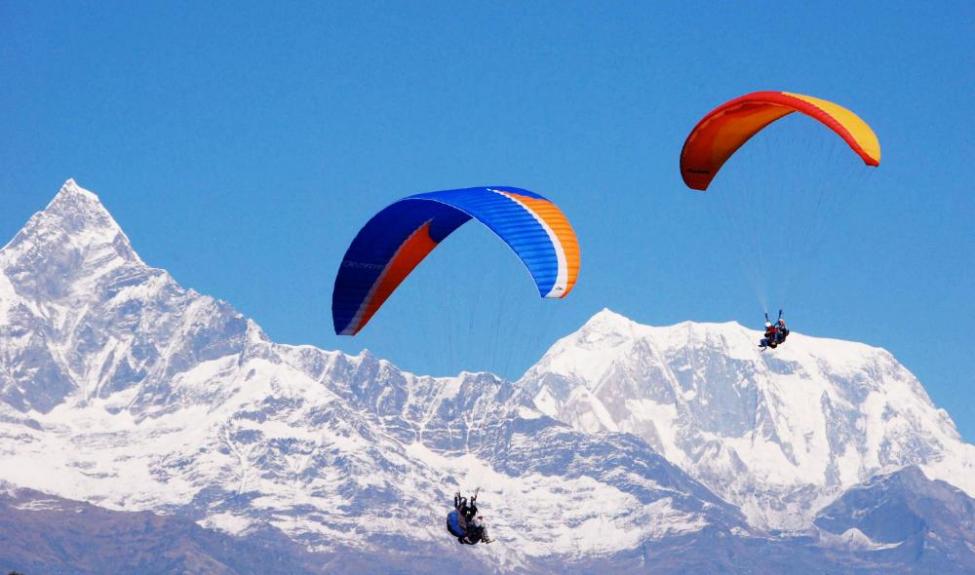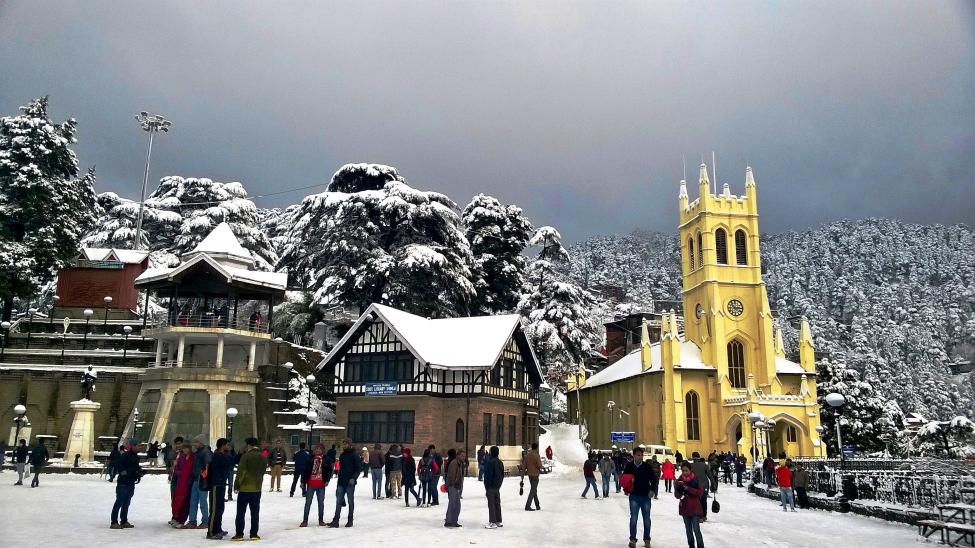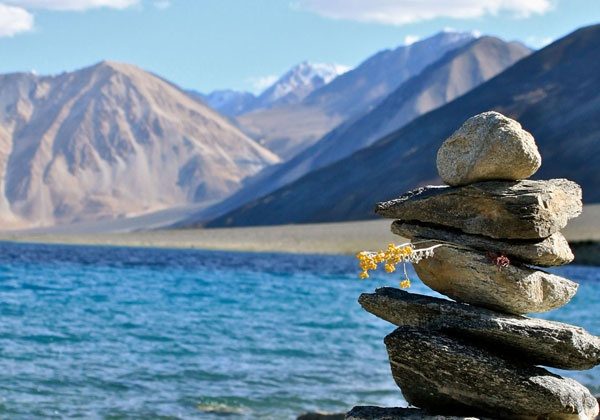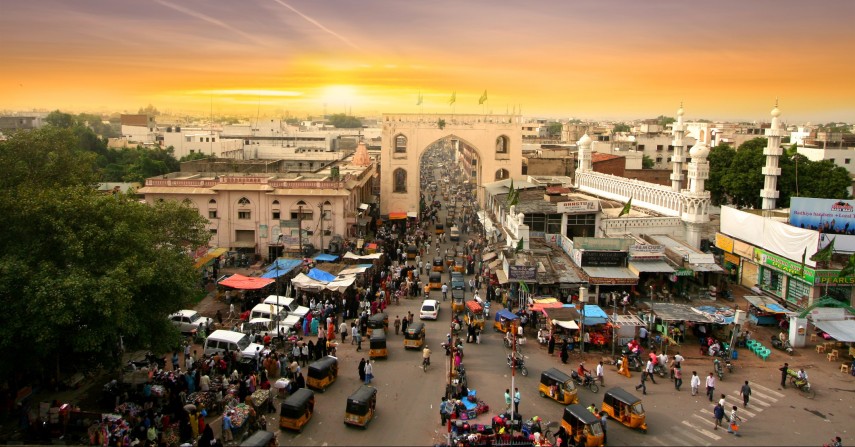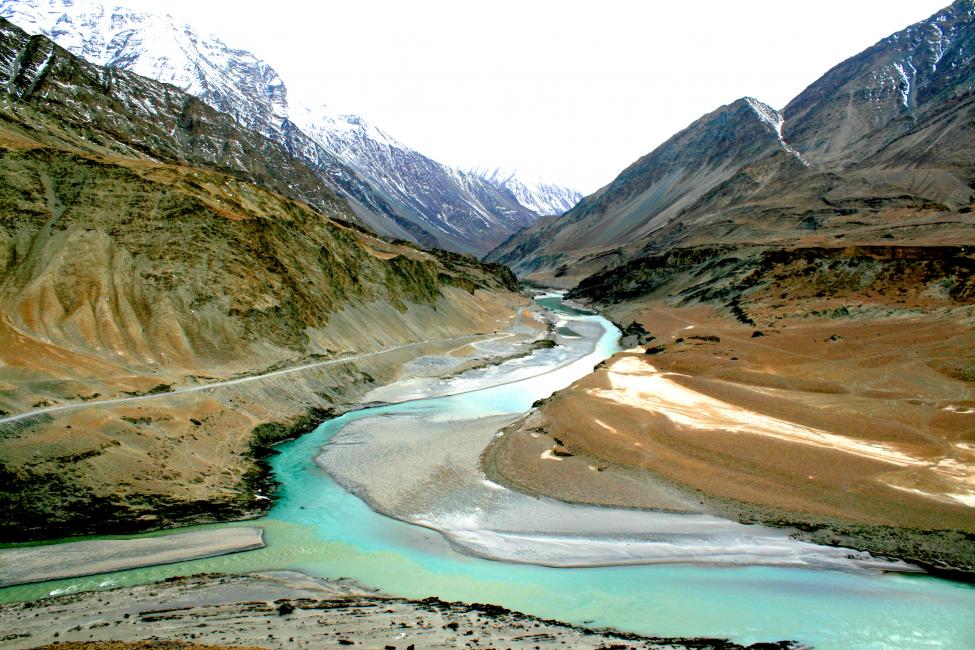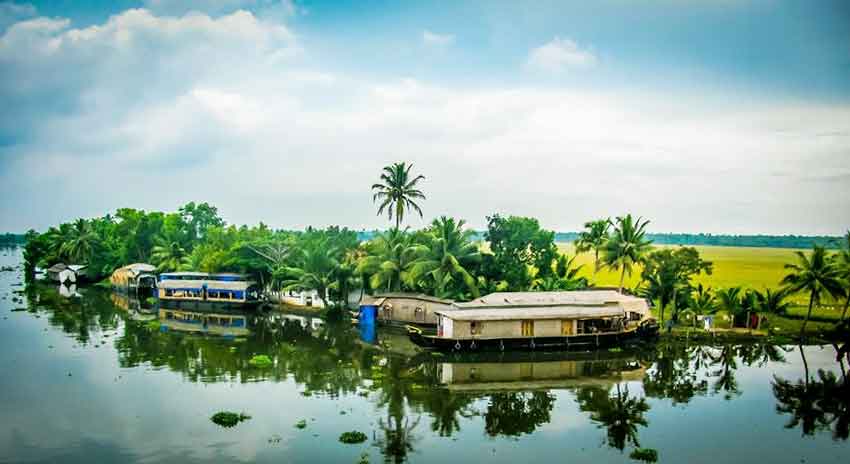
Destinations Cover
chennai - Mahabalipuram - Kanchipuram - Auroville - Chidambaram - Thanjavur - Trichy - Madurai - Kanyakumari - Kovalam - Trivandrum
Tour Overview
South India is the area including the five Indian states of Andhra Pradesh, Karnataka, Kerala, Tamil Nadu and Telangana, as well as the three union territories of Lakshadweep, Andaman and Nicobar Islands and Puducherry, occupying 19% of India's area (635,780 km2 or 245,480 sq mi). Covering the southern part of the peninsular Deccan Plateau, South India is bounded by the Bay of Bengal in the east, the Arabian Sea in the west and the Indian Ocean in the south. The geography of the region is diverse with two mountain ranges–the Western and Eastern Ghats, bordering the plateau heartland. Godavari, Krishna, Kaveri, Tungabhadra and Vaigai rivers are important non-perennial sources of water. Chennai, Bangalore, Hyderabad, Trivandrum, Coimbatore, Visakhapatnam, Madurai and Kochi are the largest urban areas.
Day 1: Arrive Chennai
Attractions: Fort St. George, San Thome Cathedral and the museums
You arrive in Chennai by international flight. Upon arrival assistance and check-in hotel. Overnight
stay at hotel.
Chennai formerly called Madras, Originally Chennai was a cluster of villages, perched amidst paddy
fields, bordered by palm trees. Attraction, Fort ST. George: was built in 1640 AD, by the British
East India Company under the direct supervision of Francis Day and Andrew Cogon. Marina Beach:
ANNA Memorial: the memorial for ARINZAR ANNADURAI. San Thome Basilica: at the south end of
Marina Beach was named after Saint Thomas "doubting apostle of Jesus Christ".
Day 2: Chennai S/S – Mahabalipuram (70 km / 2 Hrs.)
Attractions: Shore Temple, Five Rathas and Arjuna’s Penance
Today morning post breakfast we leave for half day sightseeing to Chennai city, touching Fort St.
George, The Fort St. George Museum was opened to the public from 31st January 1948. The
museum began with a small collection of objects of the British Raj donated by the then Madras
Presidency Government, the St. Mary's Church authorities, the disbanded army units and others.
Over the years many objects were acquired by various means and there are now 3661 registered
antiquities in the collection. Best among them (602) are on display in
ten galleries.
The building housing the museum is one of the oldest surviving
buildings built within the fort. The building was completed in 1795 and
served as the location for Madras Bank. The museum building has a
history of its own.
San Thome Cathedral, St. Thomas built a church at San Thome.
After his martyrdom, his body was buried in the Church built by him. A
pot containing earth, moistened by his blood and the lance with which
he was pierced were both buried in his tomb. Goverment Museum
Chennai : The proposal for a museum in Madras was mooted by the Madras Literary Society in1846 AD and Sir Henry Pottinger, the then Governor, obtained the sanction of the Court of Directors
of the East India Company in London. The museums that contain the world's most complete and
impressive selection of Chola bronzes and stone sculptures from South India and the Deccan.
Later drive to Mahabalipuram for overnight stay at hotel. (B)
Day 3: Mahabalipuram – Day excursion to Kanchipuram (65 Km / 01hr / one way)
Attractions: Kailasanatha Temple, Sri Ekambaranathar Temple, Kamakshi Amman Temple and Vaikunta Perumal Temple
After breakfast, we drive for an excursion to Kanchipuram, one of the seven sacred cities of India.
From 6th to 8th centuries when Kanchipuram became the Pallava capital, the arts especially
literature, music and dance prospered and first South Indian
stone temples were constructed by King Mahendra Varma-I,
who converted from Jainism to Hinduism and worshipped
the God Shiva. Your sightseeing will include Kailasanatha
Temple, the oldest and most beautiful temple of
Kanchipuram, reflecting the freshness & simplicity of early
Dravidian architecture, and built by Pallava King Rajasimha
in the late 7th century. Sri Ekambaranathar Temple is
dedicated to Shiva and is one of the largest temples in
Kanchipuram constructed by Pallavas. The temple’s name is
said to have derived from Eka Amra Nathar- Lord of the
Mango tree and there is an old mango tree with four
branches representing the four Vedas. A plaque nearby claims that the tree is 3500 years old. We
move on to Kamakshi Amman Temple which is an imposing temple dedicated to the goddess
Parvathi in her guise as Kamakshi, the goddess who accedes to all requests and Vaikunta Perumal
Temple is dedicated to Vishnu. Later drive back to Mahabalipuram and overnight stay at hotel. (B)
Day 4: Mahabalipuram – Half day excursion of Mahabalipuram
Today we leave at 1000 hrs for a half day sightseeing of Mahabalipuram.We cover the Shore
Temple: Ravaged by natural forces of sea and wind, the Shore
Temple is the remaining master-piece of Pallavas architecture
next we visit to Five Rathas: The Five Rathas are sculptured
temples carved from solid rock in the shape of Chariots (Rathas).
They lie about 200 m south of the main hill and were fashioned
out of a smaller hill sloping down from the south and finally visit
to Arjuna’s Penance – This bas-relief, hailed as one of the
major glories of Indian art, is a huge rock canvas with chisel-
sketches of the denizens of the triple world of Gods & demi-gods,
of humans, birds and animals and of Nagas & nymphs – all fitting
harmoniously into the theme of the penance of Arjuna. Evening
at leisure and overnight stay at hotel. (B)
Day 5: Mahabalipuram – Auroville – Pondicherry (100 Km / 02hrs)
Attractions: Matrimandir,Sri Aurobindo Ashram
Morning post breakfast, we drive at 0900 hrs to Auroville near Pondicherry. The community of
Auroville consists of Indian & International residents who aim to develop
a harmonious enviroment through the implemention of the teachings Sri
Aurobindo & The Mother. The community is involved in Integral
Development of humananity and socially useful projects. Upon arrival
visit Matrimandir which was designed to be the spiritual and physical
centre of Auroville. The meditation hall is lined with white marble and
contains a solid crystal (Reputedly the largest in the world) 70 cm in
diameter and manufactured by the Zeiss company in Germany. (Thetemple is opened between 1530-1630 hrs). Next we drive to Pondicherry, the land of Sri
Aurobindo Ashram, the serene world of distinct spiritual vibration and thus renowned as Sacred
Land. Upon arrival check-in hotel. Evening at leisure and overnight stay at hotel. (B)
Day 6: Pondicherry -Chidambaram -Thanjavur (250 Km / 06 hrs)
Attractions: Chidambaram Temple,Brihadeshwara temple, Thanjavur Palace and Museum.
Today we will cover Chidambaram, Chidambaram Temple is one of the most ancient and most
celebrated shrines in India located in Cuddalore district of Tamilnadu.
It is of great religious as well as historic and cultural significance.
Chidambaram is associated with Lord Nataraja or Shiva in his
"Ananda Tandava" pose (the Cosmic Dance of Bliss) in the Cosmic
golden hall and the hall of Consciousness ('Chit Sabha'). Further
proceed to Thanjavur, upon arrival assistance and check-in hotel for
overnight stay. (B)
Day 7: Thanjavur – Trichy – Madurai (260 Km / 06 hrs)
Attractions: Srirangam Temple & Rockfort
After breakfast, we leave at 0800 hrs to visit Brihadeshwara temple, also known as the 'Big
Temple', built by the Chola emperor Raja Raja I (985-1013 AD). It was the ancient capital of Chola
kings. This is the Chola dynasties finest contribution to Dravidian art. This massive temple is 216
feet high topped by a huge monolithic cupola weighing over 80 tones. The architectural wonder of
this temple is that the shadow of it's cupola never falls on the ground. After that we visit Thanjavur
Palace and Museum.
In the afternoon at 1300 hrs we leave for Trichy covering
Srirangam Temple & Rockfort, Trichy's most famous landmark,
which has a Temple, perched on the outcrop of Rock. Srirangam is
an ancient and most sacred temple of Vaishnavites and is situated
in an island formed by river Cauvery and its tributary Kollidam. The
giant 13-storied gopuram (gateway tower) of the temple is seen
from several miles away. This huge temple complex, which has 21
gopurams and numerous other interesting religious structures was
built by Pallava, Chola, Pandya and other rulers. Next we drive to
Madurai for overnight stay in hotel. (B)
Day 8: Madurai
Madurai, also called the "city of nectar" is one of the oldest cities of India with a history dating back
to 6 th century B.C. and has been a centre of learning and
pilgrimage for centuries. This sacred city attracts thousands of
pilgrims and visitors from India as well as abroad. Later in the
afternoon at 1500 hrs we visit Meenakshi Sundareshwar
temple, one of the largest temple complexes in India built
between the 16th and 18th centuries by Pandyan rulers. This
'living' temple is an example of Dravadian architecture with
gopurams covered from top to bottom in a breathtaking
profusion of multicoloured images of gods, goddesses, animals,
mythical figures etc. There are two shrines, one dedicated to
Sundereshwarar (Shiva) and the other to his consort Meenakshi
(Parvati). The Hall of 1000 Pillars is the most striking feature in
the temple, which was built in 16 th century. Apart from the estimated 33 million sculptures there, the
temple is absolutely absorbing with the endless rounds of ceremonies, prostration of countless
devotees and glittering market stalls. In the evening witness the “Aarti ceremony” at the Meenakshitemple. Overnight stay. (B)
Day 9: Madurai – Kanyakumari (250 Km / 05 hrs)
Attractions: Vivekananda Rock Memorial and the Temple of Virgin Goddesses
Morning post breakfast we leave for Kanyakumari, the
Southernmost point of Indian mainland territory, at the confluence of
the Indian Ocean, Arabian Sea and Bay of Bengal. After check-in at
the hotel we visit Vivekananda Rock Memorial and the Temple of
Virgin Goddesses. The full moon evenings offer one of the best
sunsets and moon rise simultaneously. Evening at leisure and stay
overnight at hotel. (B)
Day 10: Kanyakumari – Kovalam (100 Km / 02 hrs)
Attractions: Beaches
After breakfast we head for Kovalam, south of Trivandrum and one of India's best beaches. The day
is invested in exploring the unbounded beauty of this place. Kovalam offers among the best
ayurvedic massage and treatment in the world. Overnight stay. (B)
Day 11: Kovalam – Trivandrum - Kovalam
Attractions: Padmanabha Swamy Temple, Kuthiramalika (Puthenmalika) Palace Museum, Napier Museum
Today you will go foe city tour of Trivandrum - Located at the southern-west tip of India, with an
area of 2192 sq kms, Thiruvananthapuram District is bounded by the Arabian Sea on the west and
Tamil Nadu on the east.
Day 12: Kovalam
Days at leisure and overnight stay at hotel. (B)
Day 13: Kovalam – Trivandrum (Departure)
In time transfer to International Airport to board the flight back home.
Inclusions / Exclusions
Inclusions / Exclusions
The Price Includes:
- Accommodation in Rooms in Hotels Chosen by Guest (As Per Availability)
- Daily Breakfast At The Hotel
- Transportation In An Air –Conditioned Vehicle With Driver Assistance Of Our
- 01 Mineral Water Bottle Per Person per Day.
- Monks & Monkeys Surprise Departure Gift.
- All Applicable Taxes Like Fuel Charge, Parking Charge & Tall Taxes
- All Government Taxes GST 4.50 % (Till Date)
The Price Excludes:
- Domestic Flights & Airport Departure Tax From India (This Is Generally Included In Your Ticket)
- Any Meals Except Mentioned In The Column Prices Includes.
- Any Expenses Of Personal Nature Such As Tips Beverages, Laundry, Telephone Calls, Photography, Entrances And Video Fees, Etc.
- Any New Taxes / Fees Imposed By The Government


